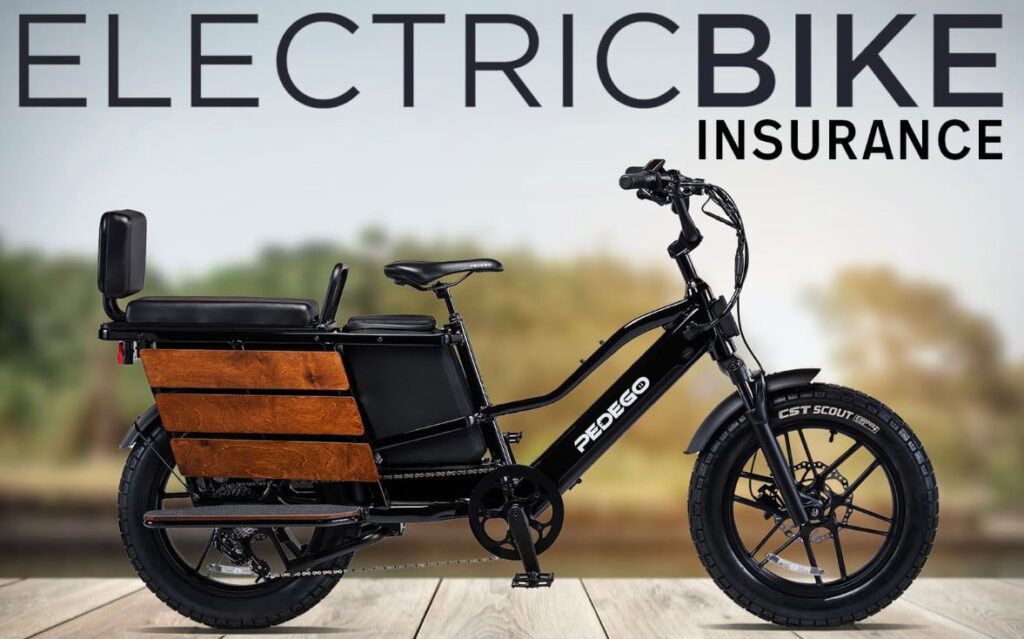Protecting Your Ride in a Growing Urban Trend
The electric bike (e-bike) market is booming, with global sales projected to reach 40 million units by 2025, driven by urban commuters and recreational riders seeking eco-friendly, efficient transportation. E-bikes, with motors up to 750 watts and speeds reaching 28 mph for Class 3 models, are valuable investments, often costing $1,000 to $10,000. However, their speed, weight (31–73 lbs), and visibility make them prime targets for theft and accidents, especially in urban areas where theft rates have surged 30% since 2020. E-bike insurance plans for 2025 riders offer critical protection against these risks, covering theft, damage, liability, and more. This article explores the best e-bike insurance plans for 2025 riders, detailing coverage options, providers, and considerations to ensure peace of mind on every ride.
Why E-Bike Insurance Is Essential for 2025 Riders
E-bikes occupy a unique space between bicycles and motorized vehicles, combining pedal power with electric assistance. This hybrid nature introduces risks not fully covered by standard homeowners or renters insurance, which often exclude motorized vehicles or offer limited coverage (e.g., $500–$2,500 deductibles). E-bike insurance plans for 2025 riders address these gaps, providing tailored protection for the 82% of e-bike users commuting in urban areas and recreational riders tackling trails or long distances.
Rising Risks for E-Bike Riders
Theft is a major concern, with nearly 2 million bikes stolen annually in the U.S. and Canada, 50% from homes or public spaces. E-bikes, valued for their expensive components like lithium-ion batteries, are prime targets. Accidents are also a risk, as e-bikes’ higher speeds increase the potential for damage or injury. In 2023, New York City reported 267 lithium-ion battery fires, highlighting the need for comprehensive coverage. E-bike insurance plans for 2025 riders mitigate these financial risks, ensuring riders aren’t left out of pocket after a theft, crash, or liability claim.
Benefits of Specialized E-Bike Insurance
Specialized e-bike insurance plans for 2025 riders offer full-value replacement without depreciation, unlike homeowners policies that may only cover depreciated actual cash value. They include liability coverage for injuries or property damage caused while riding, which is critical in urban areas with heavy pedestrian traffic. Additional benefits include coverage for accessories (e.g., GPS, batteries), roadside assistance, and medical payments, providing peace of mind for daily commuters and weekend warriors alike.
Key Features of E-Bike Insurance Plans for 2025 Riders
When selecting e-bike insurance plans for 2025 riders, consider coverage options that address the unique needs of e-bike ownership. Here are the essential features to prioritize:
Theft and Damage Protection
Theft coverage is vital, as e-bikes are often stolen from public spaces like offices or campuses. Policies should cover theft from home, car, or bike racks, with reimbursement at full replacement value. Accidental damage coverage includes repairs or replacement for crashes, vandalism, or falls, critical for e-bikes with costly components like motors or batteries. For example, Velosurance offers worldwide theft protection and damage coverage for all e-bike classes.
Liability and Personal Injury Coverage
Liability coverage protects riders if they cause injury or property damage, such as colliding with a pedestrian or vehicle. This is especially important in cities like San Francisco, where dense traffic increases accident risks. Medical payments coverage, ranging from $1,000 to $10,000, covers rider injuries, including ambulance costs or X-rays. Progressive’s policies, for instance, include liability starting at $75/year, ensuring affordability for urban riders.

Accessory and Roadside Assistance
E-bikes often feature expensive accessories like GPS units or custom saddles, which should be covered up to $500–$1,000 per claim. Roadside assistance, such as Progressive’s $12/year add-on, provides towing or repairs for breakdowns, offering convenience for commuters stuck far from home. Policies like BikeInsure include accessory coverage for items like Wahoo or Garmin bike computers.
Customizable and Flexible Policies
E-bike insurance plans for 2025 riders should allow customization, such as adding worldwide coverage for travel or seasonal adjustments for stored bikes. Markel’s policies, for example, offer flexible deductibles ($200–$500) and multi-bike discounts, ideal for families or riders with multiple e-bikes. This flexibility ensures coverage aligns with individual riding habits, whether daily commuting or occasional recreational use.
Top E-Bike Insurance Plans for 2025 Riders
Below are the best e-bike insurance plans for 2025 riders, selected for their comprehensive coverage, affordability, and suitability for urban and recreational riders.
Velosurance: Best for Comprehensive Coverage
Velosurance, founded by cyclists, offers highly customizable e-bike insurance plans for 2025 riders, covering Class 1, 2, and 3 e-bikes up to 750 watts. Policies include theft (worldwide), accidental damage, liability, medical payments, and optional roadside assistance. With no depreciation on bike value, Velosurance ensures full replacement cost, ideal for high-end e-bikes ($1,500+). Premiums start at $100/year, with add-ons like accessory coverage ($500/claim). Its streamlined claims process, resolving in 5–7 days, minimizes downtime. Explore Velosurance’s e-bike insurance options.
BikeInsure: Best for Budget-Friendly Plans
BikeInsure provides affordable coverage at $16.99/month for all e-bike classes, with optional theft protection for $8/month. Underwritten by Great American Insurance Company (A+ AM Best rating), it offers up to $10,000 per bike for theft, damage, and transit accidents, with a low $100 deductible. As the official partner of USA Cycling, BikeInsure is trusted for its straightforward enrollment and coverage for accessories like bike computers. It’s ideal for budget-conscious commuters seeking reliable protection.
Progressive: Best for Bundling Discounts
Progressive’s e-bike insurance plans for 2025 riders cover all e-bike classes, starting at $75/year for liability and including comprehensive and collision coverage. Riders with existing Progressive policies (home, auto, renters) can bundle for discounts, reducing costs. Coverage includes theft, vandalism, and accidents, with optional roadside assistance ($12/year) and accessory protection. Progressive’s wide availability and customizable policies make it a strong choice for urban riders. Learn more about Progressive’s e-bike insurance.
Sundays Insurance: Best for Low-Cost Premiums
Sundays Insurance offers plans starting at $8/month, covering Class 1, 2, and 3 e-bikes with theft, damage, and liability protection. Its “new for old” option replaces bikes without depreciation, and accessory coverage includes helmets and GPS units (up to $1,000). Sundays’ policies are tailored for commuters, with transportation cost reimbursement ($75) for breakdowns. Its cyclist-focused approach ensures quick claims and affordable premiums, ideal for casual riders.
Lemonade: Best for App-Based Management
Lemonade’s e-bike insurance plans for 2025 riders integrate with renters or homeowners policies as “Extra Coverage” for Class 1 and 3 e-bikes, offering theft, damage, and personal injury protection with a $0 deductible. Its app-based platform simplifies claims, often processed in minutes, making it convenient for tech-savvy commuters. Premiums start at $100/year, with transparent pricing and coverage for high-value bikes (up to $4,000), perfect for urban riders replacing car commutes.
How to Choose the Right E-Bike Insurance Plan for 2025
Selecting the best e-bike insurance plans for 2025 riders depends on your riding habits, bike value, and budget. Here’s how to make an informed choice:
Assess Your Riding Style
Daily commuters in urban areas like New York or San Francisco need robust liability and theft coverage due to higher accident and theft risks. Recreational riders may prioritize damage and accessory coverage for occasional trail rides. Progressive and Sundays cater to commuters, while Velosurance suits both with customizable options.
Evaluate Bike Value
For e-bikes under $1,000, homeowners or renters insurance may suffice, though coverage is limited. High-value e-bikes ($1,500+) require specialized plans like BikeInsure or Velosurance, which offer full replacement value. Calculate your bike’s value, including accessories, to ensure adequate coverage.
Compare Premiums and Deductibles
Premiums range from $8–$16.99/month, with deductibles of $100–$500. BikeInsure’s $16.99/month plan with a $100 deductible is budget-friendly, while Markel’s higher deductibles suit premium bikes. Compare quotes online, as providers like Lemonade offer transparent pricing via apps.
Check Local Regulations
Some jurisdictions, like California, classify high-speed e-bikes as motor vehicles, requiring specific coverage. Check local laws to ensure compliance, as Velosurance and Progressive cover all e-bike classes under federal standards (750 watts, 20–28 mph).
Challenges and Solutions for E-Bike Insurance
Navigating e-bike insurance plans for 2025 riders involves addressing several challenges to ensure optimal coverage.
Limited Homeowners Coverage
Homeowners policies often exclude e-bikes or apply high deductibles ($500–$2,500), leaving riders underinsured. Specialized plans like BikeInsure avoid this by offering standalone coverage without impacting home insurance premiums, ensuring full protection.
High Theft Risks in Urban Areas
Urban commuters face elevated theft risks, with 50% of bike thefts occurring in public spaces. Use high-quality locks (e.g., Kryptonite U-locks) and choose policies with comprehensive theft coverage, like Sundays or Velosurance, which cover bikes at home or away.
Cost Management
Premiums can strain budgets, especially for frequent riders. Opt for affordable plans like Sundays ($8/month) or bundle with Progressive for discounts. Compare providers using price comparison tools to balance cost and coverage.
Claims Processing Delays
Slow claims can delay repairs, critical for daily commuters. Providers like Lemonade and Velosurance prioritize fast claims (5–7 days), with app-based submissions for convenience. Check customer reviews to ensure reliable service, as seen with BikeInsure’s USA Cycling endorsement.
The Future of E-Bike Insurance in 2025
E-bike insurance plans for 2025 riders are evolving with the growing e-bike market. Providers are integrating tech-driven solutions, like Spoke’s data analytics for personalized premiums, and expanding coverage for e-bike batteries and smart accessories. Regulatory changes, such as proposed licensing for high-speed e-bikes in California, may increase demand for liability coverage. Incentive programs, like Connecticut’s $500–$1,250 e-bike rebates, could also include insurance discounts, promoting adoption. As urban infrastructure improves, insurers may offer route-specific coverage, leveraging smart city data to reduce risks.
Conclusion
E-bike insurance plans for 2025 riders are essential for protecting valuable e-bikes against theft, damage, and liability in urban and recreational settings. Providers like Velosurance, BikeInsure, Progressive, Sundays, and Lemonade offer tailored solutions, from budget-friendly plans to comprehensive coverage with fast claims. By assessing your riding style, bike value, and local regulations, you can choose a policy that ensures peace of mind, whether commuting through busy cities or exploring trails. As e-bikes reshape mobility, investing in the right insurance plan safeguards your ride and enhances your 2025 cycling experience.



